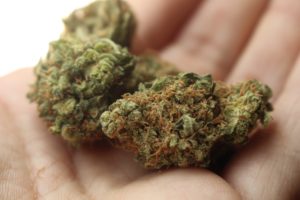WASHINGTON DC–Notwithstanding fears that legalizing marijuana for adults would lead to an increase in underage consumption, a new analysis of survey data finds that legalization is associated with a decline in cannabis use by high school students. While it is too early to draw firm conclusions, the results, which were reported online July 8 in JAMA Pediatrics, are reassuring, especially when combined with prior research on medical marijuana laws and state surveys finding no increase in adolescent pot smoking following general legalization.
Based on numbers from the National Youth Risk Behavior Survey for the years 1993 through 2017, Montana State economist D. Mark Anderson and three other researchers found that medical marijuana laws were not associated with increases or decreases in underage use. But when they looked at states that have legalized recreational use, they found that the odds of recent cannabis consumption (i.e., within the previous 30 days) fell by 8 percent, while the odds of frequent consumption (i.e., use on 10 or more of the previous 30 days) fell by 9 percent.
“Consistent with the results of previous researchers,” Anderson et al. write, “there was no evidence that the legalization of medical marijuana encourages marijuana use among youth. Moreover, the estimates…showed that marijuana use among youth may actually decline after legalization for recreational purposes.” They say “this latter result is consistent with” the results of a 2018 study that looked at adolescent marijuana use in Washington and with “the argument that it is more difficult for teenagers to obtain marijuana as drug dealers are replaced by licensed dispensaries that require proof of age.”
While that much is true, it still seems plausible that easier access to marijuana by adults would indirectly facilitate access by minors. Teenagers, after all, have parents, older siblings, and various acquaintances who are 21 or older and could become their suppliers, wittingly or not. But seven years after Colorado and Washington became the first states to legalize recreational marijuana, that phenomenon does not seem common enough to outweigh the impact of an enforceable purchase age, possibly combined with erosion of the “forbidden fruit” effect.
Jacob Sullum is a senior editor at Reason, where a version of this article first appeared.


